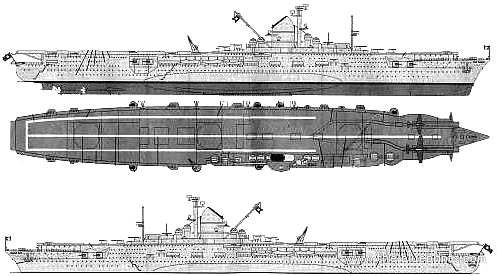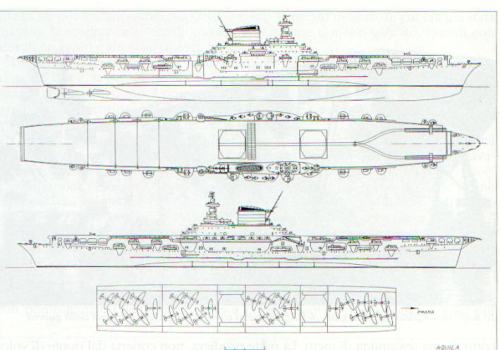With some jiggery pokery such as giving her priority over Tirpitz, Lutzow and Seydlitz they might be able to complete her before the end of 1939. If we make the POD November 1935 which was when the ship was ordered it would be possible for the Luftwaffe and Kriegsmarine to send personnel to Japan to learn aircraft carrier operations from the Japanese which would help when working up the ship. In spite of that she won't be operational until at least January 1941 (due to the reasons that will be sent in reply to this post) which would enable her to take part in Operation Berlin with Scharnhorst and Gneisenau.
One of the reasons why Graff Zeppelin and Aircraft Carrier B weren't completed was the overloading of the German shipbuilding industry in general and the yards that built them in particular.
Deutsche Werke (Kiel) which built Graff Zeppelin also received orders for 18 Type II U-boats, the battlecruiser Gneisenau, the heavy cruiser Blücher, Light Cruisers M & O and 4 Type 1934 Z-boats between 1934 and the end of January 1939. Germania (Kiel) which built Aircraft Carrier B also received orders for 46 U-boats (14 Type II, 29 Type VII & 3 Type X), the heavy cruiser Prinz Eugen, Light Cruiser P, 5 Type 1934A Z-boats and 6 F-boats over the same period.
We've had several Kriegsmarine threads recently and in some of them I've suggested that the Germans should have built a "Super Leipzig" displacing 8,000 tons instead of the light cruiser Nürnberg and the Hipper class. That's partially because they'd be more useful and partially because they'd be easier (and therefore quicker) to build due to being an existing design that incorporated proven technology (mainly the machinery), needing less raw materials and needing less labour. Deutsche Werke built the OTL Nürnberg which was a "standard Leipzig" in 24 months, but the yard spent 49 months building Blücher, while Blohm & Voss built Hipper in 46 months and Germania built Prinz Eugen in 51 months.
In other Kriegsmarine threads I've been suggesting that the Germans might have been better off building one medium-size destroyer instead of the large Z-boats and small T-boats because they'd be better than most of the destroyers built from 1934 IOTL and because they'd be easier to build. I'd also suggested building 12 additional M-boats instead of the 10 F-boats because they'd be better warships and they could be built in a different set of shipyards to those that built the aircraft carriers, capital ships, cruisers and destroyers.
Therefore, I think that if Deutsche Werke had built a Super Leipzig and 4 medium-size destroyers instead of Blücher and the 4 large destroyers the yard would be able to do a lot more work on Graff Zeppelin before the outbreak of World War II. This is in part because Graff Zeppelin and Gneisenau were built on the same slipway and Gneisenau might be launched sooner. IOTL she was launched 19 months after being laid down but Scharnhorst was launched in 16 months. If Gneisenau is launched sooner Graff Zeppelin can be laid down and launched sooner. Also if Gneisenau is launched sooner her fitting out can be completed sooner and that might also have a knock on effect on completing Graff Zeppelin. It's probable that the yard would have made more progress on the OTL Light Cruisers M & O because they would be additional Super Leipzigs instead of a new design and because the slipways that they were to be built on would become available sooner.
Similarly if Germania is building a Super Leipzig & 5 medium size destroyers instead of Prinz Eugen & 5 large destroyers while another yard is building 6 M-boats instead of the 6 F-boats that Germania built IOTL the yard can put more effort into Aircraft Carrier B and Light Cruiser P which ITTL will be a Super Leipzig instead of a new design.
Whitley says that Aircraft Carrier B was laid down in September 1936 and he's the source that I'm using. However, most other reference works say that she was laid down on the same slipway as Prinz Eugen which means she couldn't have been laid down until September 1938 at the earliest. If that's true the TTL Aircraft Carrier B could be laid down up to 16 months earlier than OTL because Prinz Eugen was launched 28 months after she was laid down, but the OTL Nürnberg was launched 12 months after she was laid down. If Aircraft Carrier B had been laid down in May 1937 instead of September 1938 and was launched 24 months later like her sister was IOTL she'd have left her slipway in May 1939 and (in common Graff Zeppelin) construction would have continued to the spring of 1940 instead of being suspended in September 1939. Or they could simply lay down Aircraft Carrier B down in April 1936 instead of the cruiser which would be begun after the aircraft carrier was launched. Based on how long it took to launch Graff Zeppelin and Prinz Eugen that would bring the launching of Aircraft Carrier B to April or May 1938.
One of the major defects of the OTL heavy cruisers and large destroyers was their problematic high pressure steam machinery. One of the reasons for the change to the Super Leipzig and medium size destroyers is that the former would have a mixed diesel & low pressure steam plan for reliability and range while the medium destroyers would have all low pressure steam or all diesel machinery for the same reasons. This might have a side effect on the construction of the aircraft carriers and battleships as this will reduce the demand for steam turbine machinery so the manufacturers can fulfil fewer orders with the same resources. Another possible side effect is that Whitley wrote that one of the reasons for the long construction times for the Z-type destroyers was that specialists from the shipyards were constantly called to help the Kriegsmarine deal with machinery problems in the ships that had already been completed which delayed the ships that were still under construction. Hopefully, that's a problem that won't exist with the diesel or low pressure steam powered destroyers built ITTL so destroyer building times aught to be reduced as a consequence and it might allow the yards to pay more attention to the other types of warship they were building like the aircraft carriers.
Between May 1939 and the outbreak of World War II Deutsche Werke received orders for Battleship K, Battlecruisers O and Light Cruiser R while Deutsche Werke received orders for Battlecruiser Q and 6 medium-size Type 1938B Z-boats. All the capital ships and cruisers were suspended after the war broke out and cancelled later. The destroyers were re-ordered as large Type 1936A Z-boats in September 1939. The first 3 were completed as such but the second 3 were cancelled in February 1941 and replaced by 3 scout cruisers which were cancelled later.
IOTL the Germans put a lot of effort into the construction of the H class battleships between April 1939 and the outbreak of World War II in order to make making up for the time lost by the lack of suitable slipways and the lengthy gestation of the H class battleship design. According to Whitley in German Capital Ships of World War II they had 84,435 tons of material on order, delivered or in work on the slips for Battleships H, J and K at the outbreak of World War II including 35,735 tons in progress for Battleship K (which hadn't been laid down) which was on order from Deutsche Werke.
I've said before and will say again that Germany should not have ordered the H class battleships and O class battlecruisers. It should have been obvious to the Kriegsmarine's high command that Germany would soon be at war with France and Great Britain so there was no possibility of completing the Z Plan and the resoruces should be put into building more U-boats and completing the aircraft carriers, capital ships and cruisers that were already under construction. This aught to have been obvious to them on 31st March 1939 when Britain and France gave their guarantees to Poland following Germany's occupation of the rump of what is now the Czech Republic on 16th March 1939.
ITTL Germania would have received orders for 6 TTL design medium-size destroyers all of which would eventually be completed which in part was due to building them to the design they were originally ordered as. IOTL they were laid down after Aircraft Carrier B was suspended and hopefully ITTL building them to a design that requires less material and labour would spare some for the construction of Aircraft Carrier B to continue at a slow rate. Except that the other changes I've made are intended to have Aircraft Carrier B launched before World War II breaks out. Therefore, it might be the other way around, i.e. having Aircraft Carrier B more advanced in the summer of 1939 might allow the 6 destroyers ordered in the summer of 1939 to be begun and completed sooner.

